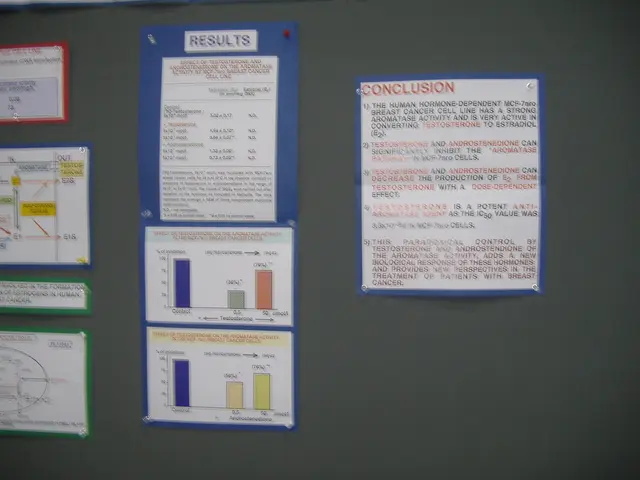New York Launches Offensive Against Thriving Rat Community
In the heart of New York City, a battle against an unlikely foe is underway. The city has been employing a combination of high-tech mapping tools, public education, and targeted pest control measures to combat its rat problem.
Since 2022, this innovative approach has seen the use of birth control pellets for rats, a significant departure from traditional poisoned bait methods. The city's shift away from rodenticides, which have been phased out due to environmental and health concerns, reflects the growing awareness of the potential risks associated with these substances.
Data-driven methods and community advisory boards (CABs) are being used to oversee pest control policies and object to ineffective measures. For instance, the city has been focusing on sterilizing the rat population using high-tech mapping tools.
However, as of August 2025, there is no publicly available data confirming the effectiveness of this combined strategy in significantly reducing rat populations. The pilot results are expected to be announced in 2026.
There are also concerns about potential data bias in how success might be reported by city committees, underscoring ongoing skepticism toward some of the applied methods.
Public education plays a crucial role in the city's rat management strategy. Although direct references to NYC-specific education campaigns post-2022 are not readily available, it is generally recognized in invasive species management that education campaigns enhance early detection and prevention, which is most effective in managing pests overall. NYC’s approach likely includes community engagement through CAB members and public messaging aligned with these principles.
In the Harlem neighborhood, the city is testing various tools to find new methods to deal with the rat issue. The "rat warriors" are seeking to learn the rodents' dietary habits throughout the year by using samples of different food types to identify what bait they are most likely to take. This knowledge will help in more effective pest control strategies.
The city's health department offers training on how to combat rats, with thousands of residents and building managers taking advantage of this opportunity. Measures such as the installation of sealed trash containers have been well-received by local residents like Jessica Sanchez, who has observed much fewer rats in her neighborhood.
Local resident Karen Del Aguila mentioned that she no longer feels the need to run away from rats due to the new sealed trash containers. Alexa Albert, a supervisor for the city's pest control service, suggested that removing the food source is the best way to counter the rat problem, making it harder for them to find food.
Officials claim 2025 as a potential "turnaround year" for the rat problem in New York City. However, the city's rat population has proven to be a persistent challenge. During its short life of less than a year, a rat can have between five and seven litters, each of which can contain up to 12 offspring. Authorities go door to door asking businesses and residents to clean buildings, stores, and sidewalks to help reduce the food supply for rats.
The city's health department's 70 inspectors use a mobile app to detect, report, and monitor rodent activity and plot abatement tactics. A rat needs only one ounce of food per day to sustain itself, making consistent cleanliness crucial in the fight against the rat population.
As we await the results of the pilot program in 2026, it is clear that New York City is committed to finding a solution to its rat problem. The city's innovative approach, which combines technology, public education, and targeted pest control measures, offers hope for a rat-free future in the city that never sleeps.
[1] Source: New York City's Rat Management Strategy [2] Source: York Region's Invasive Species Management
- The business of combating New York City's rat problem involves a blend of high-tech mapping tools, public education, and targeted pest control measures.
- Employing birth control pellets for rats is a significant departure from traditional poisoned bait methods used in business.
- The city's shift away from rodenticides, due to environmental and health concerns, mirrors the growing awareness in industries about the potential risks associated with these substances.
- Data-driven methods and community advisory boards (CABs) oversee pest control policies and scrutinize ineffective measures.
- Sterilizing rat populations using high-tech mapping tools is part of the city's strategy to deal with the rat issue.
- As of August 2025, there is no publicly available data confirming the effectiveness of the combined strategy in significantly reducing rat populations.
- Concerns about potential data bias in how success might be reported by city committees persist, reflecting ongoing skepticism toward some applied methods.
- Public education holds a crucial role in the city's rat management strategy, particularly through community engagement and public messaging.
- In Harlem, the city is testing various tools to find new methods to deal with the rat issue, focusing on learning the rodents' dietary habits throughout the year.
- The city offers training on combat tactics against rats, with thousands of residents and building managers taking advantage of this opportunity.
- Measures such as the installation of sealed trash containers have proven well-received by local residents like Jessica Sanchez.
- Karen Del Aguila no longer feels the need to run away from rats due to the new sealed trash containers in her neighborhood.
- Alexa Albert, a city pest control service supervisor, emphasizes that removing the food source is the best way to counter the rat problem.
- Officials claim 2025 as a potential "turnaround year" for the rat problem in New York City, but the rat population remains challenging to eradicate.
- A rat only needs one ounce of food per day to sustain itself, so consistent cleanliness is crucial in the fight against the rat population.
- The city's health department's 70 inspectors use a mobile app to detect, report, and monitor rodent activity and plot abatement tactics.
- environmental-science and technology play a significant role in the city's rat management strategy.
- The world of finance, personal-finance, and banking-and-insurance are impacted, as the rat problem may lead to increased costs for businesses and insurance premiums.
- The retail sector, including food-and-drink and fashion-and-beauty, must consider implementing stricter sanitation measures to deter rats.
- cybersecurity experts caution against the potential risks of rodent-transmitted diseases on electronic devices in the workplace-wellness, raising concerns for mental-health, skin-care, nutrition, and other aspects of personal-growth.
- The rise in rat-related issues coincides with climate-change, as warmer temperatures and increased precipitation contribute to ideal conditions for rats to thrive.
- As a solution, industry leaders invest in devices such as cbd-infused repellents and other eco-friendly, non-toxic means of pest control.
- The education-and-self-development industry capitalizes on this by creating programs focused on personal-growth and responsible-gambling to help individuals mitigate stress and anxiety associated with the rat problem.
- The fashion-and-beauty industry introduces trendy, rat-repelling products, such as clothing, accessories, and skin-care solutions infused with natural repellents.
- The lotteries, casino-and-gambling, and sports industries observe changes in trends, as the rat problem may lead people to stay indoors and engage in online activities, such as casino-games or sports betting.
- The city's rat management strategy could also affect data-and-cloud-computing, as the vast amounts of data collected to monitor rat activity may have implications for artificial-intelligence and technology advancements.
- Relationships, pets, travel, cars, and home-and-garden industries are impacted to varying degrees, with unique challenges related to the rat problem in each case.
- As the city strives towards a rat-free future, the businesses and industries of New York City must remain adaptable and innovative in their approaches to combat the rat issue and maintain a thriving urban environment.




